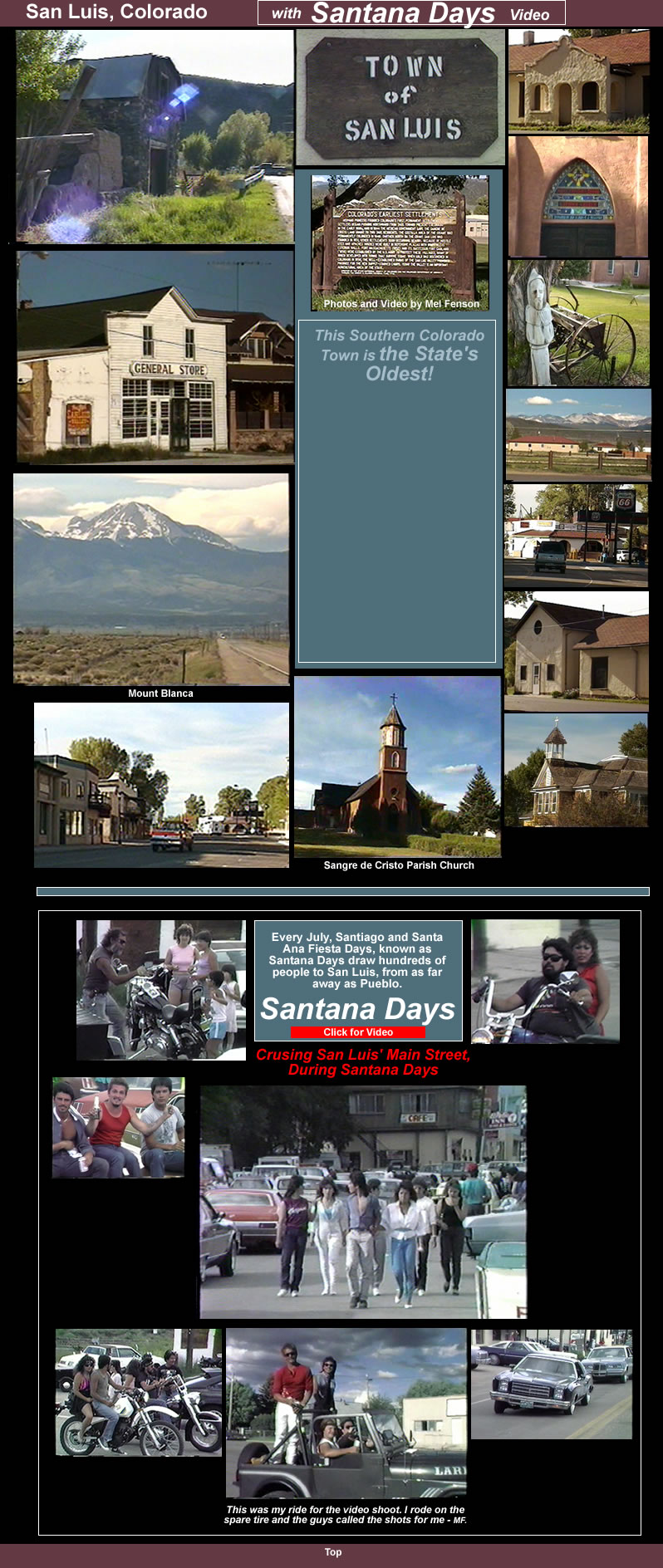The San Luis Valley is one of the largest high desert valleys in the world, lying at an altitude of over 7,000 feet. It is approximately 125 miles long and over 65 miles wide, surrounded by the peaks of the Sangre de Cristo mountains to the east, the San Juan mountains to the west, and New Mexico to the south. The Old Spanish Trail, a major trade route, passed through the San Luis Valley.

Sage-Dotted San Luis Valley
Originally settled by Spanish and Mexican settlers around 1850, as a part of four Spanish Land Grants decreed by the King of Spain, San Luis is the county seat of Costilla County with a population of about 1,000 people today. Its Spanish heritage is reflected in the archictecture of its few remaining historic buildings, including the picturesque Sangre de Cristo Parish Church.
With the discovery of gold and silver in the San Juan mountains, a huge influx of miners and adventurers entered the area. By 1878, the railroad reached Alamosa, which became a rail hub for the area. The narrow-gauge line was later extended to Antonito , Colorado and then into New Mexico.
When you are pass through San Luis, you’ll find Emma’s Hacienda Restaurant on main street. It was established in 1937 by Emma Espinoza, who still runs the business. With a decor of cast-iron wood stoves, kettles and irons, it is a popular place to eat in San Luis.
A main attraction in town is the San
Luis Valley History Museum. It exhibits Indian artifacts, historical photographs
and antiques. There are also displays which portray early ranch and farm life,
and early railroading in the San Luis Valley. Among the Museum’s displays
are an early general store, along with a model of an 1800’s U.S. Post
Office, and a typical country grade school classroom.
Other points of interest close to San Luis are the Great Sand Dunes National
Monument and the 14,364 ft. Mount Blanca, one of North America's highest peaks
which overlooks the huge Zapata Ranch, where thousands of buffalo still roam.
The Great Sand Dunes National Park, the Alamosa and Monte Vista National Wildlife
Refuges, the Cumbres & Toltec Scenic Narrow Gauge Railroad and numerous
natural hot springs are also nearby.
Santana
Days Photos and Video footage
from Colorado Magazine Online's
1986 Southwest
archive.

